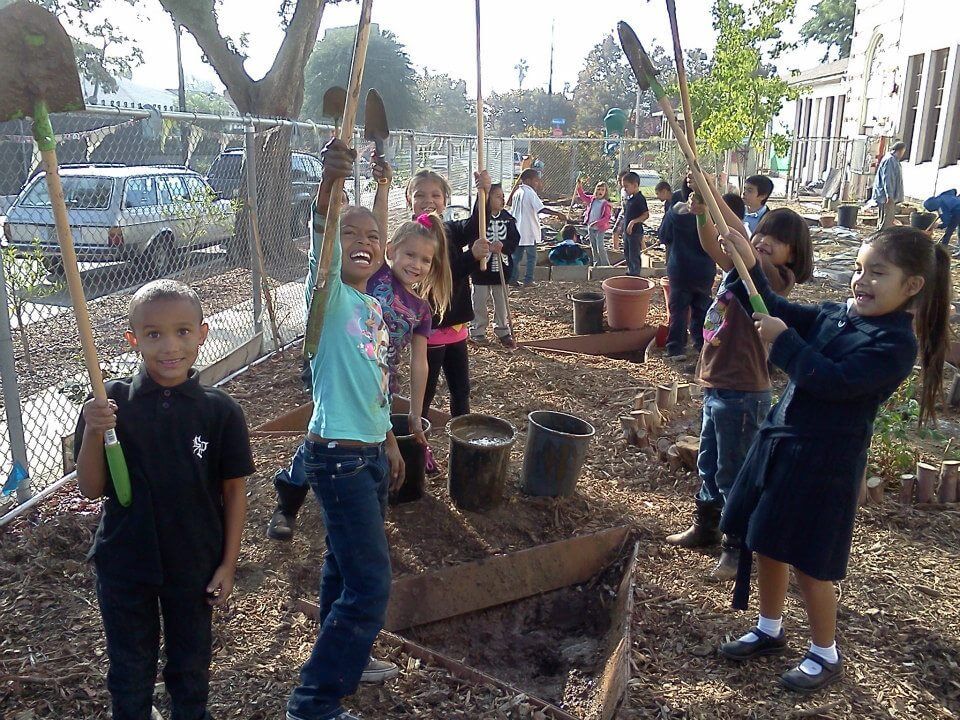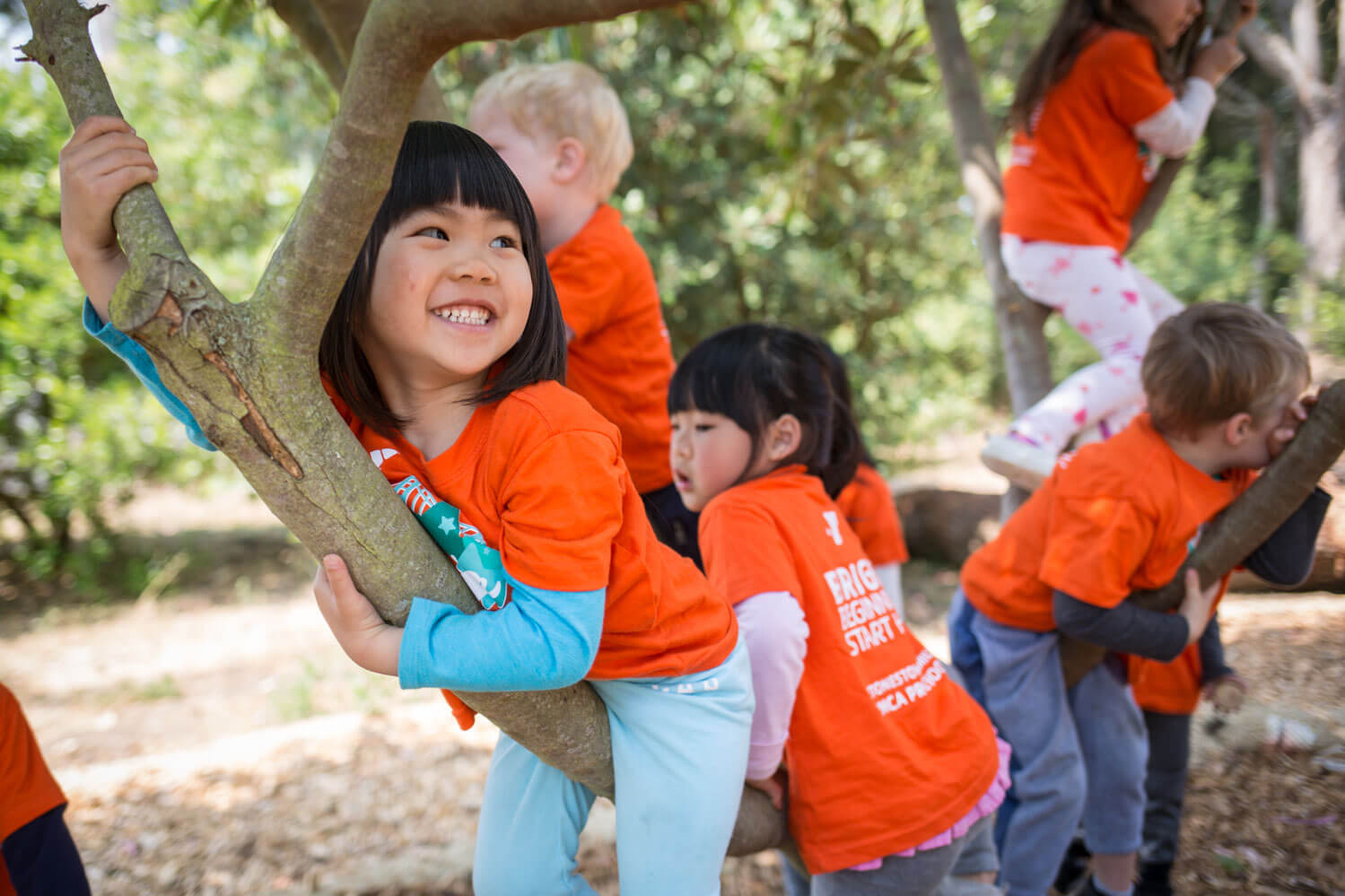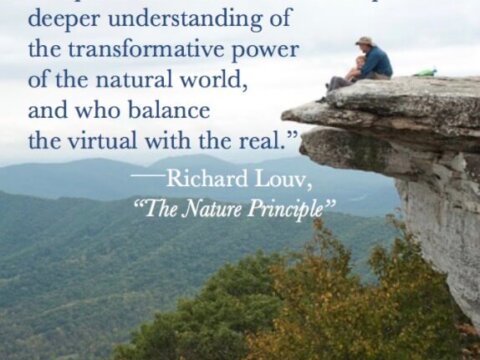The Equigenic Effect: How Nature Access Can Level the Playing Field for Children
An interview with Dr. Cathy Jordan, Consulting Research Director for the Children & Nature Network
FNN: What exactly is the equigenic effect?
Dr. Jordan: “When I think about the equigenic effect, I think of hope. Equigenesis is a term that comes out of the health field to refer to when something in the environment disrupts the usual relationship between economic disadvantage and a poor health outcome, making lower and higher economic status groups more equal. Sometimes, it’s referred to as “leveling.” The term is used in our sector to refer to when nature benefits children negatively impacted by economic disadvantage even more than it benefits children from more advantaged backgrounds. So, although nature might be good for all children, it’s especially good for those who might be at risk for poorer health, mental health, social or educational outcomes as a result of factors associated with limited financial resources. The implication is that equitable access to nature could, for example, help close educational achievement gaps or reduce health disparities.”
FNN: What evidence is there for this effect and what inequities can it reduce?
Dr. Jordan: “Unequal outcomes for children of color and lower income can be seen across a variety of domains – for example, physical health, mental health, and education. The equigenic effect can be seen in all of these spheres as well, and from the beginning of life. Mothers living in greener neighborhoods tend to give birth to healthier babies and this relationship, at least in some studies, is strongest for those from lower income or educational backgrounds.1 Enhancing young people’s contact with nature reduces their risk for mental health problems, such as depression, anxiety, and ADHD symptoms, and this may be especially true among lower income groups.2 Students in schools in lower income, urban neighborhoods may benefit more from green space in terms of academic achievement test scores compared to higher income neighborhood schools.3”

FNN: Where can we see the equigenic effect taking place–and are some ways of connecting with nature better at producing the equigenic effect than others?
Dr. Jordan: “The equigenic effect has been seen in both active and passive experiences with nature – when children participate in nature-based programming as well as when nature is just “around” their neighborhood or they can see greenery from the classroom window. We haven’t studied yet whether the equigenic effect is stronger in specific types of green spaces or nature-based programs compared to others.
FNN: In the age of COVID, talk about how this research takes on particular importance.
Dr. Jordan: “As children return to school this fall, they will come with their own physical and mental health, social, and academic needs based on their family’s experiences with COVID and its restrictions. Some may be disengaged or bored from learning online last year. Others may have experienced significant stress or trauma as a result of a COVID-related death or economic struggles. Some may feel upset due to racial injustices and recent civil unrest. We know communities of color and those that experience economic hardships are at higher risk of COVID-related illness and death and disproportionately suffer the negative economic and wellbeing consequences of restrictions and shutdowns. Children from these families — that are likely experiencing the most significant consequences of COVID — stand to benefit the most from school-based nature exposure. A return to in-person education through use of greened schoolyards and nature-based learning could create a win-win-win situation: outdoors is the safest place to learn4; nature can increase well-being and reduce stress5; and nature-based instruction can be a particularly effective pedagogy.6 And, because of the equigenic effect, the biggest winners could be students from less advantaged backgrounds.”
- Dadvand P., de Nazelle A., Figueras F., Basagana X., Su J., Amoly E., Green space, health inequality and pregnancy. Environ. Int. 2012; 40:110–115.
- Maas, J.; Verheij, R.A.; De Vries, S.; Spreeuwenberg, P.; Schellevis, F.G.; Groenewegen, P.P., Morbidity is related to a green living environment. J. Epidemiol. Community Health 2009, 63, 967–973 | Wells, N.M.; Evans, G.W., Nearby nature: A buffer of life stress among rural children. Environ. Behav. 2003, 35, 311–330 | Cleland, V.; Crawford, D.; Baur, L.A.; Hume, C.; Timperio, A.; Salmon, J., A prospective examination of children’s time spent outdoors, purposely measured physical activity and overweight. Int. J. Obes. 2008, 32, 1685–1693.
- Sivarajah, S.; Smith, S.M.; Thomas, S.C., Tree cover and species composition effects on academic performance of primary school students. PLoS ONE 2018, 13, e0193254.
- Associated Press, August 14, 2020, Education Week: Fauci: Schools should be outside as much as possible,
- Dettweiler, U., Becker, C., Auestad, B.H., Simon, P., Kirsch, P., (2017). Stress in school. Some empirical hints on the circadian cortisol rhythm of children in outdoor and indoor classes. International Journal of Environmental Research and Public Health, 14(5)
- Kuo, M., Barnes, M. & Jordan, C. (2019). Do Experiences With Nature Promote Learning? Converging Evidence of a Cause-and-Effect Relationship. Frontiers in Psychology, (2019). 10:305. doi: 10.3389/fpsyg.2019.00305
2 Comments
Submit a Comment
-
Network News
Earth Day: Young leaders advocate for change
-
Feature
Nature photographer Dudley Edmondson has a vision for the representation of Black and Brown faces in the outdoors
-
Richard Louv
EARTH MONTH: You're part of the New Nature Movement if....
-
Voices
Placemaking: How to build kinship and inclusive park spaces for children with disabilities
-
Network News
Children & Nature Network founders release report on global factors influencing the children and nature movement






Thank you for this article! I am new to the Parks and Rec world and want to begin outreach to youth in lower socio-economic schools. This is a good start.
Thanks, Roxana. We’re so glad you liked it. Congratulations on entering the parks and rec field. In the cities section of our Resource Hub, you’ll find tools for community and youth engagement, and if you’re interested, sign up for out Cities newsletter. The sign-up is on our Cities Connecting Children to Nature page.